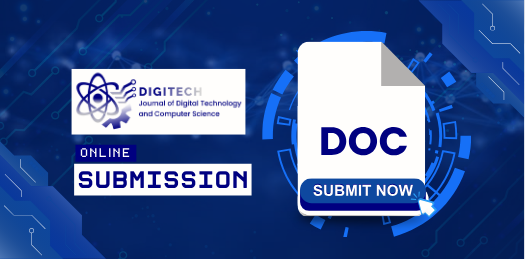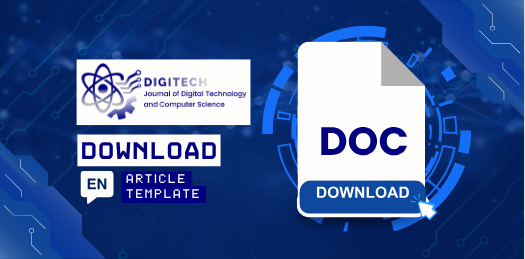Traditional Food Ordering Service Information System "ANTAR RASA"
DOI:
https://doi.org/10.61220/digitech.v2i1.20243Keywords:
Culinary, Inter Rasa, Infotmation System, Makassar Traditional FoodAbstract
The younger generation's interest in traditional food, partly due to limited digital promotion and accessibility, raises concerns about the preservation of Makassar's culinary heritage. This research aims to design and implement AntarRasa, a web-based food ordering information system to facilitate online access to traditional foods while strengthening local cultural identity. This study uses a qualitative descriptive-analytical method, with data collected through structured interviews and user observations, then thematically analyzed and validated to ensure its accuracy and reliability. The system was developed with features including registration, login, home, about, menu, gallery, and order, and tested using white-box and black-box verification methods. The results of the study showed that the system functions effectively, meets user needs, and provides convenience in ordering traditional food. In conclusion, AntarRasa supports the preservation and promotion of culture by integrating technology with culinary heritage and can serve as a model for similar applications in the context of other regional foods.
References
[1] D. Malik and V. Rosalina, "Traditional Android-Based Using Methods," Journal of Information Systems, vol. 6, no. 1, pp. 12–19, 2019.
[2] A. P. Sakti, R. S. Sianturi, and A. P. Kharisma, "User Experience Evaluation of Online Shopping Mobile Application with Design Thinking Method (Lazada Case Study)," Journal of Information Technology and Computer Science Development, vol. 6, no. 7, pp. 3499–3508, 2022.
[3] K. Thomas-Francois, S. Somogyi, and A. Zolfaghari, “The cultural acceptance of digital food shopping: conceptualisation, scale development and validation,” IJRDM, vol. 51, no. 3, pp. 306–326, Feb. 2023, doi: 10.1108/IJRDM-11-2021-0552.
[4] E. Esa, C. O. G.A.D.H.U, and N. Novi, "Design and Build an Information System for the Sales of Traditional Bakati Cakes Using the Waterfall Method," Informatics: Journal of Computer Science, vol. 19, no. 3, pp. 165–171, 2023, doi: 10.52958/iftk.v19i3.6147.
[5] P. A. A. Barros, J. de Paula Matos, M. B. Rodrigues, R. J. da Costa, and P. M. Horta, “Food digital marketing on social media: trends and strategies of Brazil’s leading meal delivery app,” Frontiers in Nutrition, vol. Volume 12-2025, 2025, [Online]. Available: https://www.frontiersin.org/journals/nutrition/articles/10.3389/fnut.2025.1620348
[6] I. Inayati, "Web-Based Food Ordering Application," e-NARODROID, vol. 1, no. 2, pp. 792–801, 2015, doi: 10.31090/narodroid.v1i2.71.
[7] R. Hanny, A. Syah, and D. Novita, "Analysis of the Use of E-Commerce on the Increase in Income of Culinary MSMEs in Sawangan - Depok District," Excellent, vol. 7, no. 1, pp. 56–68, 2020, doi: 10.36587/exc.v7i1.626.
[8] Z. Noor, Qualitative and quantitative research methodology. Yogyakarta: Deepublish, 2015.
[9] T. Handayani, I. Gunawan, and R. Taufiq, "Design and Build a Web-Based Food Menu Ordering Information System (Case Study: Bukit Randu Airport Restaurant)," SITECH Journal of Information Systems and Technology, vol. 3, no. 1, pp. 21–28, 2020, doi: 10.24176/sitech.v3i1.4837.
[10] D. Guo, R. L. M. Ramos, and F. Wang, “Qualitative online interviews: Voices of applied linguistics researchers,” Research Methods in Applied Linguistics, vol. 3, no. 3, p. 100130, Dec. 2024, doi: 10.1016/j.rmal.2024.100130.
[11] A. Gupta, K. Backholer, C. E. Huggins, R. Bennett, G. K. W. Leung, and A. Peeters, “Understanding food choices and promoting healthier food options among online food delivery service users in Australia: a qualitative study,” BMC Public Health, vol. 25, no. 1, p. 1721, May 2025, doi: 10.1186/s12889-025-22839-5.
[12] H. A. Martini-Blanquel, “Clinical Instruments Validation: Key Aspects,” Family Care, vol. 31, no. 3, pp. 177–184, June 2024, doi: 10.22201/fm.14058871p.2024.388838.
[13] A. Kaes, “In Search of Germany: Alexander Kluge’s THE PATRIOT,” in Alexander Kluge, 1st ed., T. Forrest, Ed., Amsterdam University Press, 2012, pp. 95–126. doi: 10.1017/9789048513390.006.
[14] M. Septio, "Web-Based Food Ordering Information System with CodeIgniter Framework (Case Study: Warung Simple)," Jurnal Student Development Informatics Management, vol. 1, no. 1, pp. 12–32, 2022.
[15] A. I. L. Da Costa, M. D. L. J. M. De Almeida Fonseca Rosa, and P. M. J. Diogo, “Considering Participant Observation Methods for Nursing Qualitative Research,” TQR, Oct. 2024, doi: 10.46743/2160-3715/2024.7647.
[16] W. Pudyawardana, "Designing a Web-Based Food and Beverage Ordering Information System at Lamongan Cahaya Restaurant," ALMUISY: Jurnal Al Muslim Information System, vol. 2, no. 1, 2023.
[17] M. E. Kiger and L. Varpio, “Thematic analysis of qualitative data: AMEE Guide No. 131,” Medical Teacher, vol. 42, no. 8, pp. 846–854, Aug. 2020, doi: 10.1080/0142159X.2020.1755030.
[18] D. Indriani, A. Saeful, and A. Taryanto, "Designing a Web-Based Food Ordering Information System at Foodcourt RSKIA Bandung," Indonesian Journal of Socio-Technology, vol. 2, no. 10, 2021, [Online]. Available: https://jurnal.example.com
[19] H. L. Varona, T. A. Capuano, C. Noriega, J. Araujo, M. Araujo, and F. Hernandez, “DSCompare: Unleashing the potential of ocean and atmospheric data with a comparative analysis software,” Software Impacts, vol. 18, p. 100578, Nov. 2023, doi: 10.1016/j.simpa.2023.100578.
[20] Alhamidia, R. Asmara, E. Iswandy, and A. Budiman, "Implementation of Web-Based Food Ordering Information System," Journal of Science and Informatics, vol. 6, no. 2, pp. 104–109, 2020.









 Email:
Email: 
